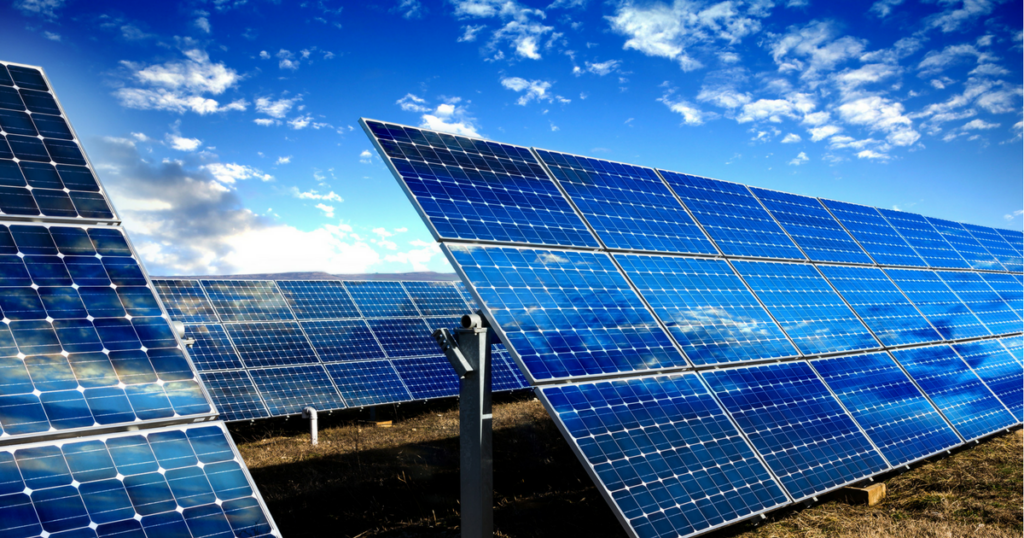Invest in On-Site Renewable Energy
Environmental Defense Fund
On-site renewable energy involves generating energy from renewable sources on your own property, providing a reliable, cost-effective, and sustainable source of energy. Investing in on-site renewable energy is a powerful way to drive positive environmental benefits while also reaping significant economic benefits.

Investing in on-site renewable energy can bring numerous benefits to your company. First and foremost, it can help reduce your carbon footprint and demonstrate your commitment to sustainability, which is becoming increasingly important to consumers and stakeholders. Additionally, on-site renewable energy can help reduce your energy costs by producing clean energy on your property. On-site renewable energy also reduces your dependence on the grid, which can help stabilize your energy costs.
With the advancement of technology and the availability of funding incentives, on-site renewable energy is becoming an increasingly accessible and cost-effective option for businesses. Embracing such sustainable practices helps mitigate the impacts of climate change and contribute to a more sustainable future.
Effective Project Implementation Strategies
As you consider implementing an on-site renewable energy system, it’s important to develop a strategy to ensure the success of the project. Here are some key factors to consider:
- Select the right technology: There are several on-site renewable energy technologies to choose from, including solar photovoltaic (PV) systems, wind turbines, geothermal systems, and biomass systems. Each technology has its own advantages and disadvantages, so it’s important to select the one that best fits your facility’s energy needs and is most compatible with the location of your facility.
- Conduct a feasibility study: A feasibility study is an assessment of the potential for implementing an on-site renewable energy system at your facility. It involves evaluating the energy needs of your facility, analyzing the available renewable energy resources, and determining the most appropriate technology for your needs. It can also help identify barriers to implementation, such as zoning regulations or building codes.
- Develop a project plan: A project plan outlines the goals, timeline, and budget for the on-site renewable energy project. It includes a detailed description of the system design, equipment, installation process, and commissioning.
- Engage stakeholders: Engaging stakeholders, including employees, customers, the local community, and investors, is essential as you build out an on-site renewable energy project. This engagement is crucial to communicate the benefits of the project and address any concerns or questions that stakeholders may have.
- Hire experts: Partnering with renewable energy experts, equipment manufacturers, and installation contractors can help ensure the success of the on-site renewable energy project.
- Monitor and maintain the system: It’s important to monitor and maintain the system for optimal performance over time.
Cost and Funding Opportunities
Building an on-site renewable energy system can be expensive, but there are several funding incentives available to help offset these costs. The final cost your company incurs for these systems depends on several factors. Some of the costs associated with building and maintaining on-site renewable energy systems include:
- Equipment Costs: Equipment costs include the cost of the renewable energy technology itself, such as solar panels, wind turbines, or geothermal systems. These costs can vary depending on the size and type of system.
- Installation Costs: Installation costs include the cost of labor, permits, and other expenses associated with installing the on-site renewable energy system. Like equipment costs, these also depend on the size and complexity of the system.
- Operations and Maintenance Costs: Once the system is installed, there will be ongoing operations and maintenance costs to ensure that it continues to function properly. This can include regular inspections, repairs, and cleaning.
There are several funding opportunities available to help offset the upfront costs of on-site renewable energy systems. Here are some of the most common funding opportunities:
- Grants: Grant programs, typically offered by federal or state agencies, non-profit organizations, or private foundations, are available to help fund on-site renewable energy projects. Consider programs such as the U.S. Department of Agriculture’s Rural Energy for America Program (REAP). REAP provides grants and loans to agricultural producers and rural small businesses to install renewable energy systems and make energy efficiency improvements.
- Power Purchase Agreements (PPAs): A PPA is a contract between your company and a third-party renewable energy provider. For on-site projects, the provider installs and maintains the renewable energy system, and your company purchases the energy generated by the system at a discounted rate. PPAs can be a great option if you want to invest in renewable energy but don’t have the upfront capital to do so. Note that PPAs are not exclusively an on-site renewable energy solution; details depend on the contract between your company and the 3rd party running the renewable energy system.
- Energy as a service (EaaS): EaaS is another business model gaining popularity. In EaaS, a third-party provider builds an energy system on your property, which can save you the costs of building and maintaining a system yourself. These providers typically own, operate, and maintain the energy systems and equipment.
- Tax Incentives: Companies that invest in on-site renewable energy systems can also get tax-incentives. These incentives can include federal tax credits, state tax credits, and accelerated depreciation. The federal Investment Tax Credit (ITC) offers a tax credit equal to 30% of the cost of the on-site renewable energy system. This credit applies to solar, wind, and geothermal systems, among others. Some states also offer their own tax incentives for these systems.
Assistance from Government Programs
In addition to funding opportunities, there are additional government programs available to assist with on-site renewable energy projects. The U.S. Department of Energy offers technical assistance and funding opportunities through its Office of Energy Efficiency and Renewable Energy. The Environmental Protection Agency also provides resources and assistance through its Green Power Partnership program. Additionally, state, and local governments may offer incentives or assistance for renewable energy projects.